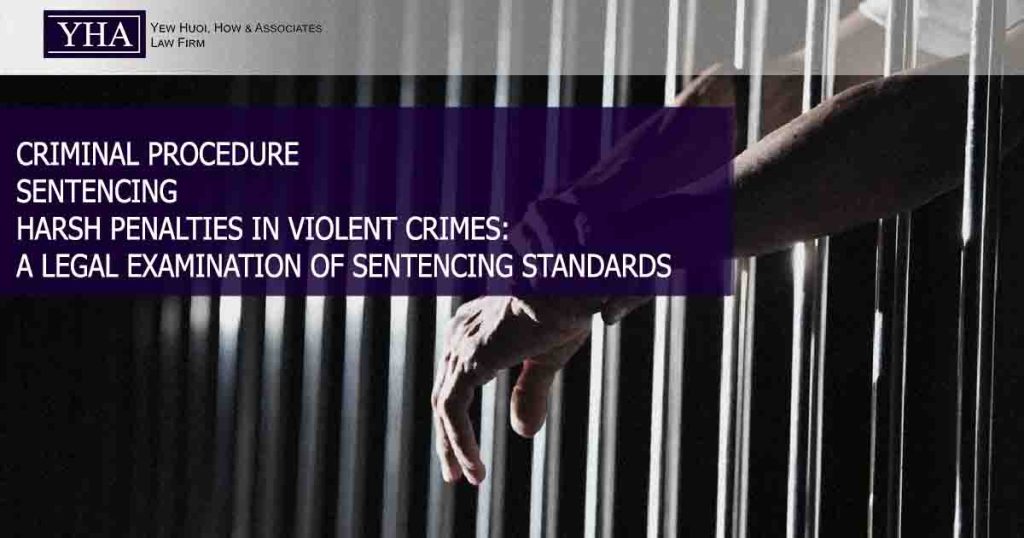ILLUSTRATIVE SCENARIO
Two accused individuals received heavy sentences for their involvement in violent crimes during a home invasion. The primary accused was sentenced to 22 years in prison and 12 strokes of the rotan for gang robbery with murder, while the second accused received 12 years and ten strokes for voluntarily causing harm.
KEY LEGAL ISSUES
- Consecutive Sentences: The appropriateness of ordering the jail sentences to run consecutively, given that the offences were committed against different victims during the same criminal act.
- Impact of Long Sentences: The consideration of public interest in imposing long jail terms, which may compromise the accused’s prospects for rehabilitation and reintegration into society.
- Proportionality of Sentences: Whether the combined sentences of imprisonment and whipping are commensurate with the violent nature of the crimes.
LAWS & LEGAL PRINCIPLES
- S.183A Criminal Procedure Code: This section allows for a victim impact statement to be made before sentencing, providing the court insights into the emotional and physical impact on the victims or their families.
- Kidnapping Act 1961: Outlines severe penalties for abduction and wrongful restraint, reflecting the serious nature of these crimes and the intent of the law to serve as a deterrent.
- Sentencing Guidelines: For the primary charge, the appellants faced a potential death sentence or up to 30 years in prison along with mandatory whipping. The secondary charge carried a penalty of up to 20 years and additional whipping.
APPLICATION TO SCENARIO
- The crimes occurred during a planned home invasion in Bintulu in May 2014.
- The court noted that the appellants, along with accomplices still at large, prepared a week in advance, employing disguises and weapons to execute the robbery.
- The male victim was murdered when he responded to his wife’s screams, who was also injured in the ordeal.
- Despite their guilty pleas, the court determined that the severity of the crimes warranted stringent sentences to serve as a deterrent, especially considering the premeditated and violent nature of the attack.
REFERENCE CASES
- PP v Mok Chin Fan & Ors [2015] 6 MLJ 857
- S Samdaran a/l Sivasamy v PP [2015] 3 MLJ 391
- PP v Bachik Abdul Rahman [2004] 2 MLJ 534; [2004] 3 AMR 429; [2004] 2 CLJ 572
- Gek Sing Kaliappan v PP [1999] 6 MLJ 641
- PP v Jessica Lim Lu Ping & Anor [2004] AMR 239
- Prabath Sinnathamby & Anor v PP [2013] 1 CLJ 873

